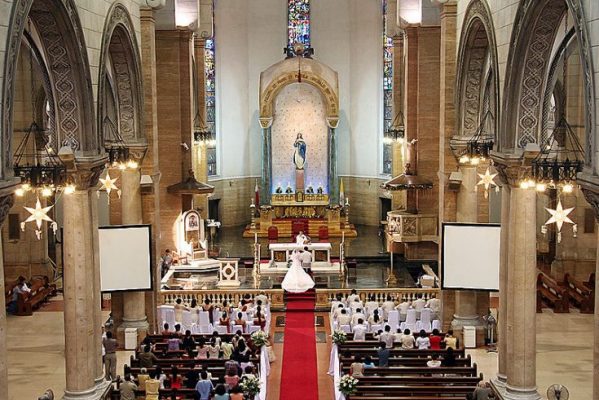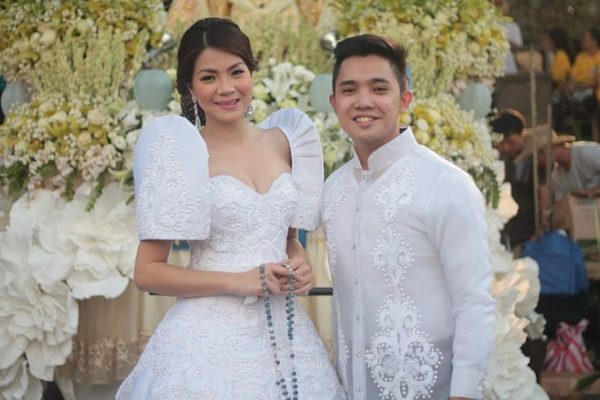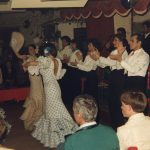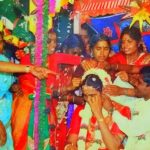In Filipino culture, weddings are one of the most celebrated occasions. It is as grand an event as it can be and is considered one of the most important parts of society. A wedding only happens once in your lifetime, so the entire community and family pitch in for the wedding. A Filipino wedding is as much a communal party as it is a family event. If you wish to experience a uniquely south-east Asian wedding experience, add attending a Filipino wedding to your list!
Background
Over 7,000 separate islands come together to form the nation of the Philippines. This leads to a diverse range of inhabitants. Every group of people has its own wedding traditions and cultures. But they all share a strong core belief in family and community.

The Spanish empire colonized the Philippines during the 18th century. This led to a large influence of Catholicism over the local culture. Today, Filipino weddings are a mixture of island traditions combined with Christian ceremonies. With a sprinkle of superstition and local folklore!
Filipinos as a people today have embraced a lot of Western norms when it comes to weddings. Catholic priests lead the wedding as they can be held in churches in most cases.
However, some people are now moving towards more traditional forms of celebration. This just shows that the people of the country still care about their history and culture.
Engagement Celebration
The formal period of courtship and engagement is known as ‘Panliligaw’ and ‘Pamamanhikan’ in Tagalog, the language of the Philippines. Historically, these were the first steps toward marriage and took much longer than they do today.
In modern Filipino weddings, there are less formal than in the past and are a way to celebrate the upcoming wedding ceremony between two families.

Naming of Godparents
In the past, there was a part of the wedding in which the family members who helped the couple organize the wedding were honored. Usually, they were elder members from both sides of the family who paid for the ceremony and other important events at the wedding.
In modern Filipino weddings, ‘Ninongs’ and ‘Ninangs’ or godfathers and godmothers are still chosen to accompany the couple’s wedding procession or party.
Family Gathering
In the pre-modern era of the Philippines, there were customs that involved both families talking about the budget of the wedding. These things generally were the budget of the wedding, who is responsible for what, and community contribution towards the event.
However, in modern Filipino communities, it’s usually the couple who pays for the wedding. And the rest of the jobs that were done by the community, are now outsourced to professionals.
But even with all this, the involvement of the couple’s family is a key part of any Filipino wedding.
Parental Blessings
One tradition that has remained constant throughout the history of the Philippines is the place of honor for parents. You can even say that without blessings from the elders and the parents, a wedding is incomplete.
Modern Filipino weddings don’t have any specific rituals to honor their parents. You can spot Individual places of honor reserved for elders and parents at the wedding ceremony. The couple receives blessings from the elders individually or together after the wedding vows.

Filipino Wedding Attire
The Barong Tagalog is the traditional outfit for Filipino grooms. It is made up of a traditionally hand-embroidered long-sleeve shirt that is paired with slacks.
Historically, Filipino brides could be seen in a Baro’t Saya, a traditional wedding dress with prominent, puffy sleeves. However, these days, modern brides tend to go for exclusively western dresses with a white theme and lace veils.
You can also spot Sampaguita, the national flower of the Philippines included in most wedding decor. It belongs to the Jasmine family of flowers. The bride’s bouquet and the floral arrangements at the venue are all highlighted by Sampaguita flowers.

Cord and Veil
Two of the most visually recognizable parts of a Filipino wedding are the cord and the bridal veil. During the wedding ritual, the couple will stand together and the priest will drape a lace veil and white linen cord over the couple.
The veil is meant to be a sign of togetherness and protection for your marriage. The cord on the other hand is a symbol of eternity and unity.
It is during this part of the ceremony that the godfathers and godmothers stand next to the couple. In many cases, they are the ones who drape the cord and the veil around the couple. They also guide the young couple through their relationship. The young couple will be modeling their relationship on the strength of the godparent’s marriage.
Unity Candle
During the wedding ceremony, the couple will light a candle together. We call it the ‘Unity Candle’.
The candle represents two souls and families uniting with each other in love and harmony.
The ritual begins with either the mother or any valued elder from the family lighting two separate candle flames.
The elder then hands over the lit candles to the bride and the groom. Which they then use to light the unity candle as one, and the ritual is complete.
Filipino Wedding Reception
The traditional word for a wedding reception in Tagalog is ‘Handaan’. Historically, a major part of the menu at any reception was rice cakes. The sticky rice cakes today are a metaphor for how couples need to stick together through thick and thin.
Nowadays, most couples opt for a more modern cuisine for their wedding banquet. Western menus have slowly taken over wedding banquets. However, many Filipino couples still choose to honor their Chinese roots by having a Chinese menu for the banquet.

A custom that has slowly been losing its place in modern Filipino weddings is the money dance. Usually, the money dance was a way for relatives and well-wishers to gift the couple money to help begin their married life.
The guests danced with the couple while discreetly pinning currency to their clothes. This custom has been slowly disappearing from wedding traditions. Couples getting married these days are financially stable and independent. This has led to a decline in the money dance at wedding receptions.
Filipino Wedding Superstitions
Hardly any traditional wedding cultures in the world do not involve superstitions! And the Filipinos are no exception. The most common one is that the bride should not try on her wedding dress before the day of the wedding.
Another superstition involves bad luck for siblings who decide to marry in the same year. Yet another one involves rain bringing prosperity on the wedding day for the couple!
Not all superstitions are positive. In fact, one other superstition involves the unity candle. Essentially, if you see the candle blow out before the couple does it themselves, the person closest to it will die.
While others are just mundane like not gifting the couple knives or sharp objects as they symbolize quarrels or bad luck.













